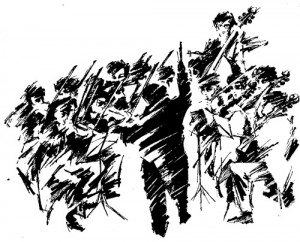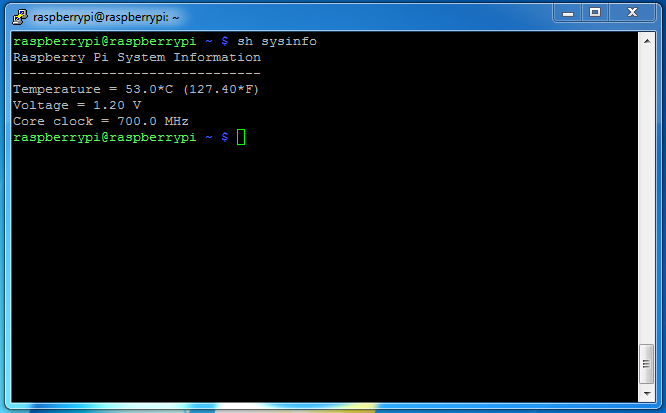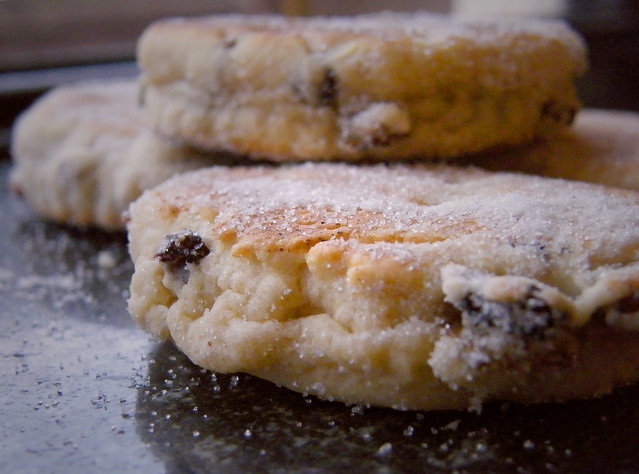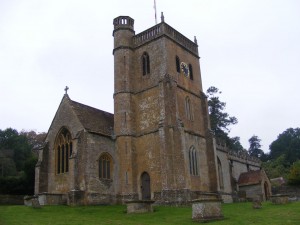
We meet again my fellow friends, bloggers, and random people visiting this website (
Don’t think about it). I am sure we have both had our numerous and spontaneous meetings with adventure, like when a person is informed they have jury duty. Ahhhh, the surprise and joy of it all! For if I know half of you half as well as I should like, and I like less than half of you half as well as you deserve, then I am sure you all have had some wonderous adventures since our last parting. I am sure you all have had exploits involving great mounds of treasure, rescuing D.I.D.’s, enjoying luscious golden manes of hair and fighting villainous paper topics.
But before I hear all the delicious and moist details of those tales and travels, please allow me the quick pleasure of explaining of mine. My recent adventure has reconciled myself and one of my oldest foes, classical music! Yes, I know the horror must be immense to the vast majority of readers who read the previous line but now I will regrettably increase it tenfold with the following statement. Classical Music and I have become allies,and started down the road towards friendship!
Where did this sudden develop begin one may ask? The answer springs from a need for non-distracting music in the background while studying in a spacious lounge with companions and Ethureans. The little music on my companion’s computers, as well as mine was quickly used up within the first day of our new study location. Hence, I searched and found out I could check out classical music from the music department. Callooh, Callay! What a joyous day, at least it was up until I actually dived deep into the classical music pool. Where I then proceeded to quickly drown like a rock thrown into a pond, an extremely deep chasmic pond. I was drowning from not knowing where to begin, what to listen to, and even being able to spell Tchaikovsky’s name! Luckily, a musically inclined friend of mine by the name of Joe Giallombardo gave to me the following guide as the life-preserver to the tumultuous waters and understand the world of classical music, which I now present to all of you to enjoy!
Again, I give Joe Giallombardo my great thanks for giving me his guide! Without further adue, I give this wonderous guide to you.~
THE DEFINITIVE MUSIC GUIDE (may be expanded later)
By Joe Giallombardo
This is an attempt to make the Definitive guide to what is commonly referred to as Classical music. Basically, its a list of the greatest music written during this time, accompanied by technical, historical, and philosophical explanations for what you’re hearing. Its grouped by composer, and the composers are chronologically ordered. These, in turn, are grouped into the three major periods of musical history from this time: Baroque, Classical, and Romantic.
And here we go:
Music has been around forever, but it wasn’t always viewed as a form of art. It was always voice-based in ancient, Medieval, and Renaissance times. Music was used for religious means, not always available to the public. One important exception was in the school of the Pythagoreans in old Greece, who saw a metaphysical connection between music and physical reality. Basically, they thought that certain natural phenomena reflected the mathematical proportions on which a musical chord is based, like the movement of the stars and planets, or the changing seasons.
Different forms of art peaked at different time. Visual art (painting, sculpting) came into its own first, during the Renaissance with Michelangelo, Da Vinci, and Raphaelo. This was the first time that people realized that art could be used in the secular world and still be used to give glory to God. They realized that beauty could point to God without being an actual prayer “per se.”
This train of thought hit the musical world a couple hundred years later, and that’s where we begin! Most of the music here is instrumental and secular, but there is also some sacred music as well. While I do put them into a time period, the music here is immortal and expresses such deep mystery that it is impossible and unfair to completely categorize each of them.
BAROQUE (1600 – 1750)
Pachelbel
The fusion of divine mystery with popular art in music began with Pachelbel. Pachelbel wrote a lot of music, but most of it was nothing new. His Canon in D (which you know and love) was a bit of a “one hit wonder.” To my knowledge, it was the first piece of music that became immediately famous and popular across the western world.
Canon in D
(This version is with the original instruments they would have used at the time.)
The Baroque Period was heralded in by the invention of “polyphony and counterpoint.” This simply means that two different musical progressions are going on at the same time, that, while independent, flow harmoniously when played together. In this idea of different sounds combining to make layered music is the germ of all great music to come.
Pachelbel lived with the Bach family, who were famous for being great organ players. He tutored Charles Bach in music, and when he went to his wedding towards the end of his life, he met Charles’ young nephew, Johann Sebastian Bach. Pachelbel took a liking to the kid and the young Bach was fascinated with the well known composer.
(There will be much more music than text from this point on!)
J.S. Bach
Bach was the first great giant of the musical world. He mainly specialized in writing impressive solo pieces. See if you can notice the common things he does in all of his music. More about what he brought to the Baroque Period later.
- Here’s the prelude to his Cello Suit I. Notice the perfect, peaceful precision of order: Prelude to Cello Suit I
- Toccata and Fugue. Two pieces that go together. Very famous. Toccata literally means “show me”; this piece is made to show off the organists skills. Actually pay attention to the video here, too. Its really cool to see what he does with the organ: Toccata and Fugue
- Suit No. 3 “Air”
Bach set a lot of trends. In Baroque music, the composer focused on one musical idea and focused on it solely throughout the piece. The allegros (faster moving pieces) are characterized by constantly moving different strands of music, equal in prominence. They had less instruments to work with (for example, the piano wasn’t yet invented) and music was very string or brass wind heavy. Listen for these things more obviously in the next composer.
George Friedrich Handel
Handel composed in England, though of German descent. (For a long time, most great composers were Germanic or Italian.) Handel composed for the English royalty, which gives a very regal flair to his work. A big recurring devise in his work is reflecting and repeating the same progression of notes, and layering them together.
Even though the Messiah is choral, there is an emphasis on the music rather than words. There are a few words repeated, and the song is a musical exploration of the meaning of the words. This is very different from the modern conception of lyrics, in which the music is made to showcase the words, rather than explore them.
Antonio Vivaldi
Vivaldi was the culmination of the early Italian school of music, which emphasized a vigor of passion and vibrancy of contrasting sounds. Nobody loved the violin more than Vivaldi; you’ll hear how string heavy his pieces are.
Vivaldi was a priest; however, because of terribly ill health, he was given allowance to withdraw from his priestly duties. While he was sick he began composing music to be played at the nearby orphanage.
Vivaldi’s music was innovative. He brightened the formal and rhythmic structure of the concerto, in which he looked for harmonic contrasts and innovative melodies and themes; many of his compositions are flamboyantly, almost playfully, exuberant
The Four Seasons
CLASSICAL PERIOD (1750 – 1830)
The Classical Period is where music really grew up. There were several major shifts. The first of these was away from pure polyphony (the idea of having equal and independent musical progressions playing at the same time). This was replaced by a series of intimately interwoven progressions of music which were layered beneath a dominant melody. There was a greater focus on chords and layers different types of sound and instruments. The piano was invented! (Yay!) New forms of music were invented.
There were two schools of music: the Germanic and Italian ones. The German’s focused on cohesiveness and order, while the Italians emphasized rigorous imagination. (Not surprising, if you know Germans and Italians!) Both schools were beginning to commingle in the royal court of Vienna, the music capital of the world. Josef Hydn had created the first symphony, and a new form was ready for exploration. This all created the perfect storm for…
Wolfgang Amadeus Mozart
Mozart was the Shakespeare of the musical world. Up until now, the great music had always belonged to the aristocracy. Mozart made music accessible to the common man, and the common man flocked to him. In order to earn enough money to work for himself (Mozart hated bosses), he toured across Europe, performing his own pieces while also conducting them. He massed a huge fan base, and became an international star. He thus combined pop culture phenomenon with enduring art.
He combined the imagination of the Italian school (where he was trained) with the form of the Germans, and created the pinnacle of the Classical form.
Mozart explored two new forms: the Symphony and the Concerto. A Concerto is a piece for a solo instrument which is accompanied by an orchestra. You know what a symphony is ;). He also wrote sonatas, operas, and serenades. Mozart’s music had more different instruments playing more different things at once than anyone before him. Critics said it was too many notes, too complicated; but Mozart knew better. He believed that music was there to express mysteries that words could not describe. The complexity lends itself to mystery. There is so much going on in a piece of Mozart’s music, that you could listen to one every day for the rest of your life, and notice something new every time. I’m not exaggerating!!!
He wrote 626 published works!
Well, here’s some of his best stuff. Notice the fusion of human passion, order, and at times, divine mystery.
Mozart’s work was that of a young man. He was in bad health on and off in his life, and he died at the age of 35, in the middle of writing his Requiem Mass. Towards the end he became worried that he was dying and told his wife that this would be his own Requiem. He fell ill during the performance of an opera of his, and threw himself into the work of finishing the Requiem. Some say he worked so hard on the piece that he didn’t give himself the chance to recover. No one knows why he died. The most extravagant explanation was that he was poisoned by rival composer, Antonio Salieri, who wanted to claim the Requiem as his own. This is probably not true, although Salieri did have a nervous breakdown about the accusations of such and ended his life in a madhouse.
Ludwig van Beethoven
Beethoven is the hardest to classify, as he is the most truly unique composer of all time. Mozart represents mathematical perfection of order. Beethoven, while not as refined, expresses things which no one else has ever dared to try to express. As such, I call him an “existentialist musician.” He grew up listening to Mozart, and was deeply influenced by him. Then he famously went deaf, and it seemed that his career was over. He considered suicide, but instead removed himself from society and took what was basically an extended retreat by himself. He spent the time in deep prayer and artistic reflection.
He came back and immediately produced his 5th symphony, perhaps the most famous piece of music ever.
Beethoven had discovered that, while he was not able to hear, he could still feel music physically vibrate. He would put his hand in the side of a piano or other instruments to feel them resonate. It was on the resonating that he would base the rest of his work. This is why he thought of sounds that other hadn’t contemplated before. I think he is the second best composer of all time, just slightly behind Mozart.
Beethoven sparked the transition into the Romantic Period. He is not, however, a romantic composer. Rather, they would later try to emulate him.
Here’s his best stuff:
Others in Classical Period:
Schubert: Ave Maria
Haydn: Trumpet Concerto
ROMANTIC PERIOD
Given the changes of European culture and the popularity of Beethoven, composers shifted their focus from order and form to emotion. They favored more simple tunes that were hummable, creating an acute expressions of man’s passions. While they were very passionate indeed, they were also often more one dimensional then Classical pieces. The Romantic music turned one in on himself, increases your emotions. The Classical music makes you forget about yourself, and get caught up in something grander, older, universal. Luckily, however, there were some Romantic composers who were able to retain a level of deep complexity to their work while transitioning into this “emotions first” period. Here are the very best of them:
Also, composers began to experiment with increasingly dissonant and unusual chords in search of newer sounds and greater contrast. The two best at this were Tchaikovsky and Chopin.
Another change is that composers increasingly wrote about particular things as subject matter, like scenes from literature of famous plays, or a particular storyline. Music became more cinematic, focusing on conveying a specific image. Music came more “down to earth.” This makes Romantic music more accessible to the modern ear, but it is also a step down from the more ethereal sounds of the Classical Period.
Frederic Chopin
Chopin was the first composer to focus solely on exploring the range of the piano, which was still a young instrument (although Mozart and Beethoven also used the piano a lot.) He is the most Classical of the Romantic composers, as you will hear. His pieces retain a level of subtlety and complexity that most Romantic composers simply were not capable of.
* Nocturn 1: http://www.youtube.com/watch?v=GZbuA7r17uk&feature=related
* Nocturn 9: http://www.youtube..com/watch?v=YGRO05WcNDk
* Fantasie Impromptu: http://www.youtube.com/watch?v=x93pwAvUkAA&feature=related
* Grand Valse Brillante: http://www.youtube.com/watch?v=g2r7skqSkNM&feature=related
* Prelude in E minor: http://www.youtube.com/watch?v=ef-4Bv5Ng0w&feature=related
Richard Wagner: The Flight of the Valkyrie (Notice how cinematic it sounds): http://www.youtube..com/watch?v=GGU1P6lBW6Q
Giuseppe Verdi:
* Triumphant March of the Aida: http://www.youtube.com/watch?v=xrOrPTf_upQ&feature=related
* Dies Irae: http://www.youtube.com/watch?v=_AQIGymhSyA&feature=related
* “La Donna E Mobile” from Rigoletto. (You’ve probably heard me singing this!): http://www.youtube.com/watch?v=xCFEk6Y8TmM&feature=related
Rossini: (Also a transitional composer from the Classical to the Romantic)
* The Barber of Seville: http://www.youtube..com/watch?v=OloXRhesab0
* William Tell Overture: http://www.youtube.com/watch?v=c7O91GDWGPU&NR=1
Johannes Brahms:
* Hungarian Dance 5: http://www.youtube..com/watch?v=3X9LvC9WkkQ
* THE Lullaby: http://www.youtube.com/watch?v=t894eGoymio&feature=related
Johann Strauss II
* The Blue Danube Waltz: http://www.youtube..com/watch?v=_CTYymbbEL4
Edward Grieg
* Piano Concerto: http://www.youtube..com/watch?v=Dxzpy1b1_BY
Puccini
* “Nessun Dorma”: http://www.youtube..com/watch?v=RdTBml4oOZ8
Pyotr Ilyitch Tchaikovsky
Tchaikovsky was the king of Romanticism. He was both the product and part of the cause of a new cultural explosion in Russia, composing at the same time the Leo Tolstoy and Fyodor Dostoevsky were writing there famous novels. He was a personal friend of Tolstoy. Russia had been more primitive than the rest of Europe for years; it had only become a cohesive nation about a hundred years ago (mid-late 1700’s). Russians, particularly the ruling Czars, wanted to emulate the Western culture, and so in only a hundred years, there was a very condensed, intense, and spontaneous birth and growth of both the novel and the symphony in Russia.
Tchaikovsky was most fascinated with the music of Mozart, which he believed embodied a mysterious paradoxical combination of the simple and the profound. He sought to emulate the master, but developed a unique style that combined the refined art of the West with the particular existentialist, tortured, passionate and introspective character of the new cultural eruption in Russia.
The intensity of personal emotion now flowing through Tchaikovsky’s works was entirely new to Russian music. It prompted some Russian commentators to place his name alongside that of Dostoevsky’s. Like Dostoevsky’s characters, they felt the musical hero in Tchaikovsky’s music persisted in exploring the meaning of life while trapped in a fatal “love-death-faith triangle.” The critic Osoovski wrote of Tchaikovsky and Dostoevsky: “With a hidden passion they both stop at moments of horror, total spiritual collapse, and finding acute sweetness in the cold trepidation of the heart before the abyss, they both force the reader to experience those feelings, too.”
* Violin Concerto (An early piece, jumps back and forth between Classical and Romantic parts): http://www.youtube..com/watch?v=JM8erHpNJ2Q
* Piano Concerto 1 (His greatest Piece!):
+ Movement 1: http://www.youtube..com/watch?v=Ybymtzye8Ng
+ Movement 2: http://www.youtube.com/watch?v=UgBAvZNzzYg&feature=related
+ Movement 3: http://www.youtube.com/watch?v=gFZVmlxOfJs&feature=related
* From Swan Lake:
+ Main Theme: http://www.youtube..com/watch?v=S76CGGPqI3s
+ Waltz: http://www.youtube.com/watch?v=QsPnZjdD3XY&feature=related
+ Dance of the Swans: http://www.youtube.com/watch?v=EVSb3dFszH4&feature=related
* Works Based of Shakespearean Plays
+ Romeo and Juliet: http://www.youtube.com/watch?v=VmLsvQaxw3g&feature=related
+ The Tempest: http://www.youtube..com/watch?v=IbKjR4MNWzw
+ Hamlet: http://www.youtube..com/watch?v=JyH1B8ONJfM
* From Sleeping Beauty (You’ve heard these before in the Disney movie!)
+ Introduction: http://www.youtube..com/watch?v=gfqQvX8C0Go
+ Waltz: http://www.youtube.com/watch?v=J_oP2ltuNyk&feature=related
* The Nutcracker:
+ http://www.youtube.com/watch?v=J_oP2ltuNyk&feature=related
+ http://www.youtube.com/watch?v=FRj0xuPF6Es&feature=related
+ http://www.youtube.com/watch?v=dXcE7QwLBMw&feature=related
+ http://www.youtube.com/watch?v=x85lDFtWKBg&feature=related
* Symphony 4: http://www.youtube..com/watch?v=S-c1LLZaVCA
* Symphony 6: http://www.youtube.com/watch?v=yhhsTBQzw5k&feature=related
* 1812 Overture (The only piece of music in this list with canons as an official part of the orchestra!):
+ Part 1 http://www.youtube..com/watch?v=rgOGl_OWOqg
+ Part 2 http://www.youtube.com/watch?v=qW4C2h3lPac&feature=related
In conclusion, there is something unquantifiable about the greatest music. I have given a very brief and thus inadequate description of the changes in music composition, the philosophy of music theory, and the history of the evolution of music; but in the end, the music speaks for itself. As I said, you can’t fully measure the highest music, because it isn’t purely physical, but also metaphysical. Words fail it, because if we could say what the piece means in normal language, there would be no reason to write the music.
As for what truly makes for the highest form of music, I would agree with Tchaikovsky’s assessment of Mozart; that Mozart combined the complex with, at times, blissful, almost childlike simplicity. The combination of the infinite and the simple is exactly what makes up a man, when you think about it… how we are all unique and complex, but we also must strive for that childlike simplicity. This is one of the many, many reasons why listening to such great music is a good exercise for the soul.
Today classical music has been restricted to the field of cinema. People make music for movies, but not for its own sake anymore. I hope, at least for some people, to carry on that torch from the greater masters before me. Here is a startling beauty which strikes at the core of man’s soul. To be able to produce that kind of beauty, to share it with others– that is the goal of a true artist.



